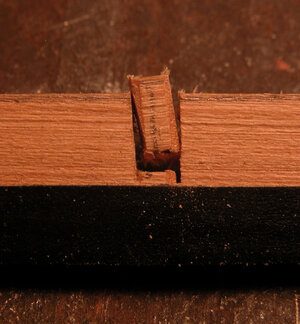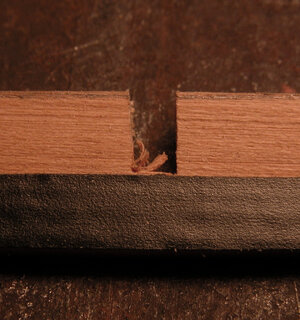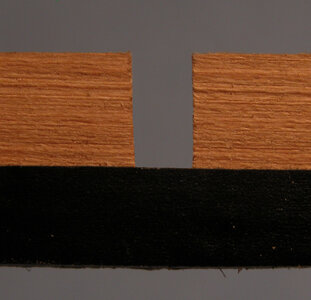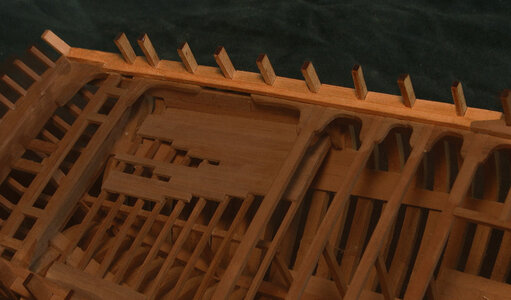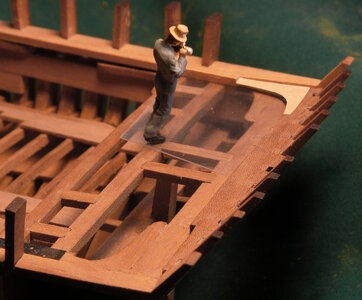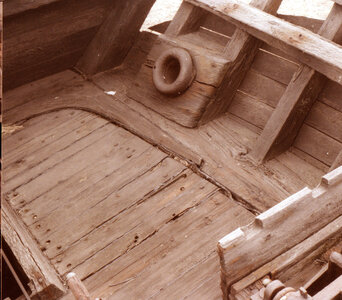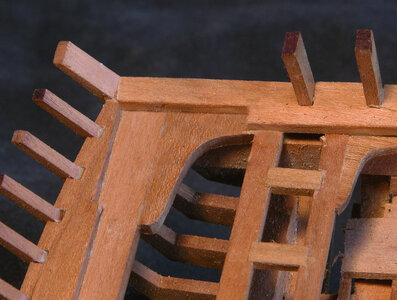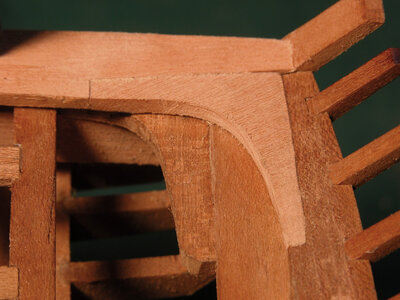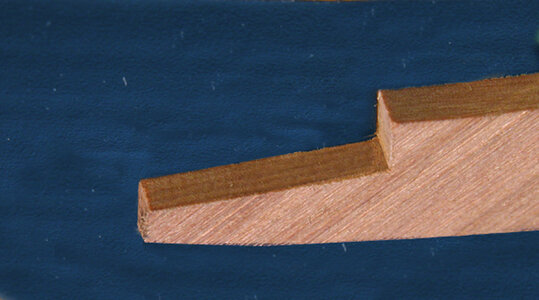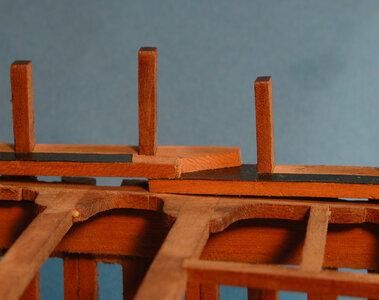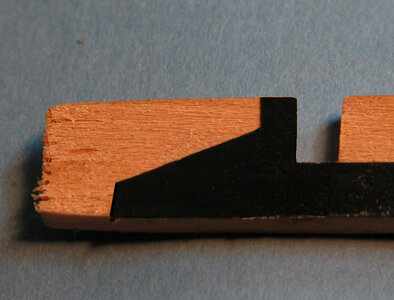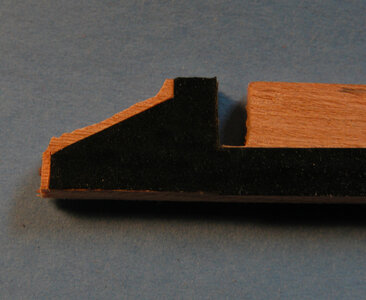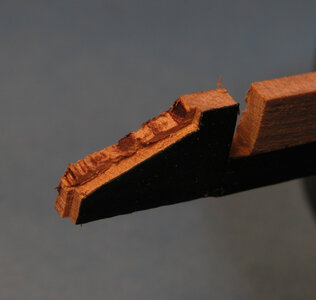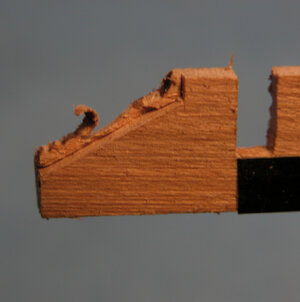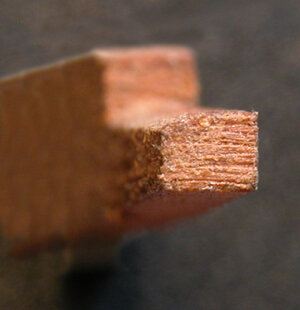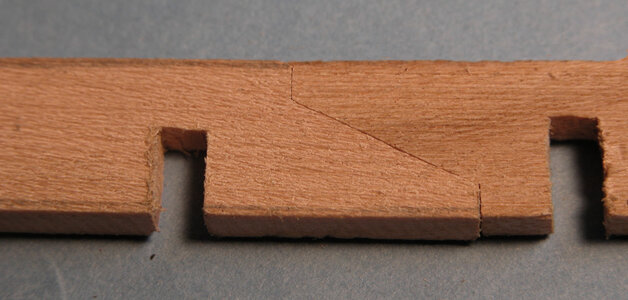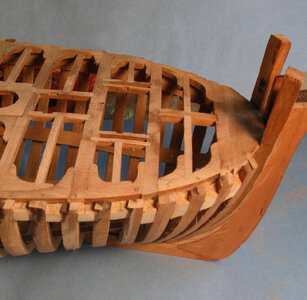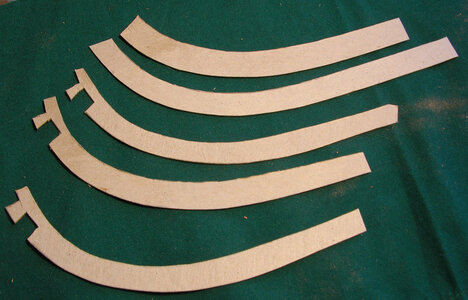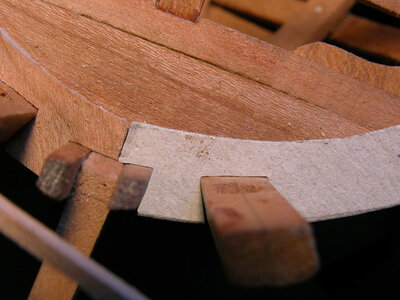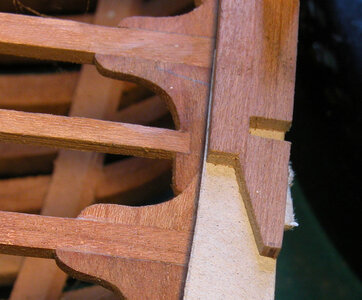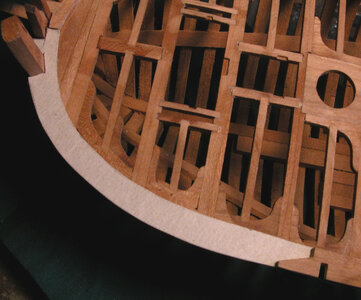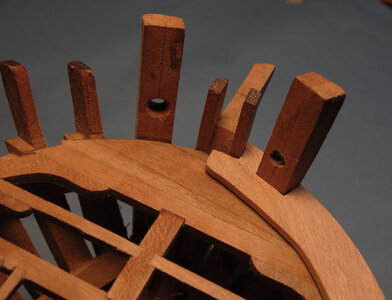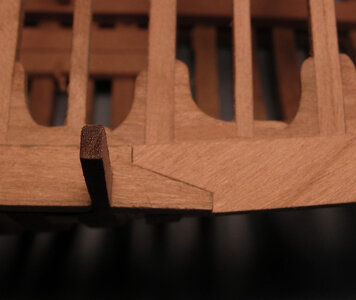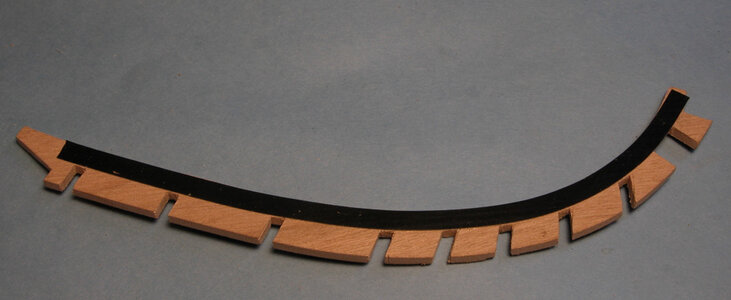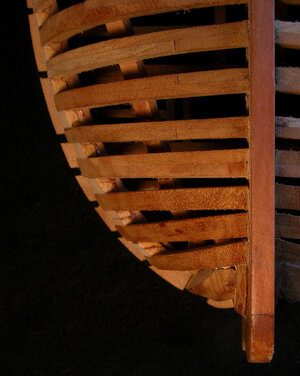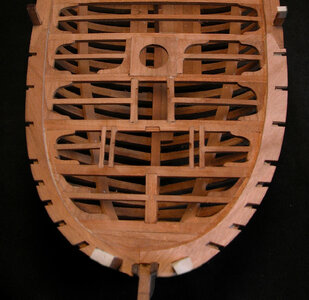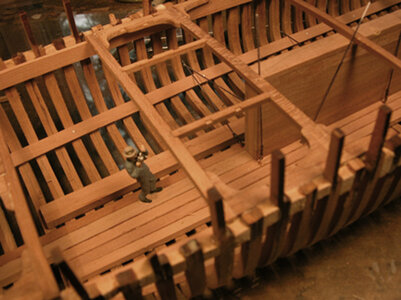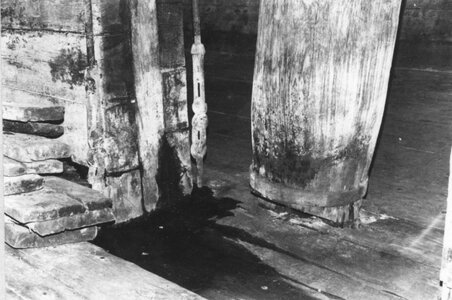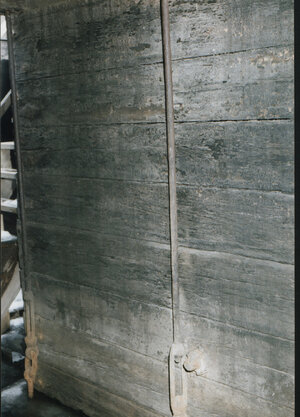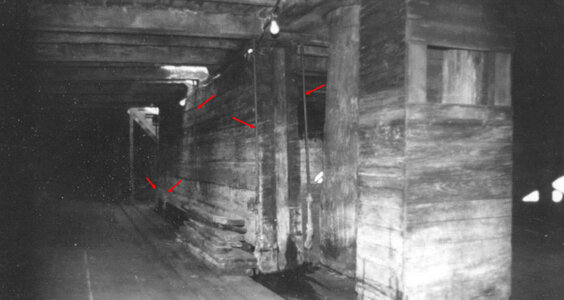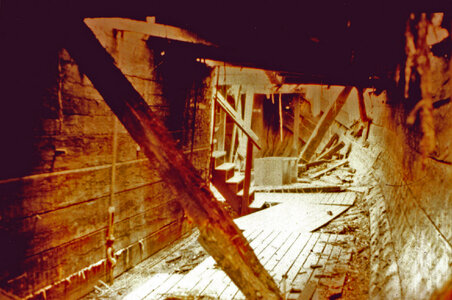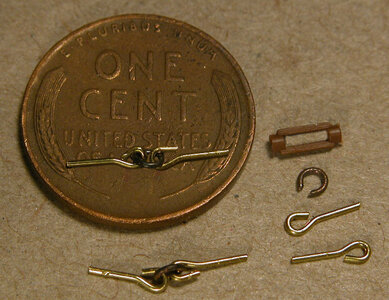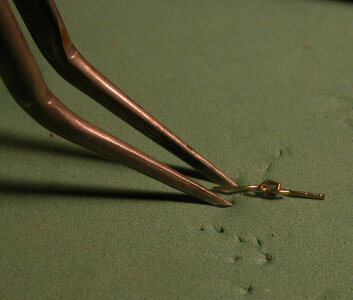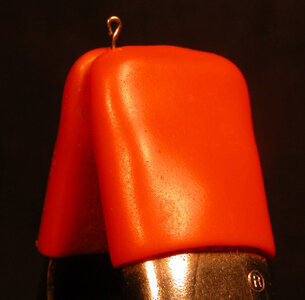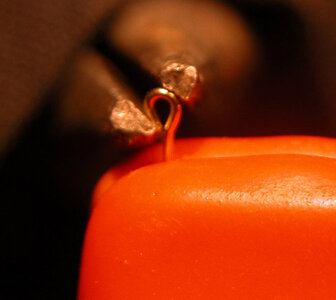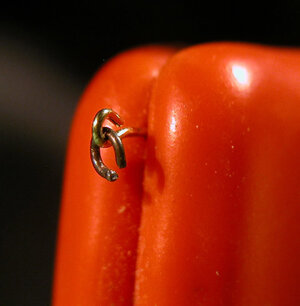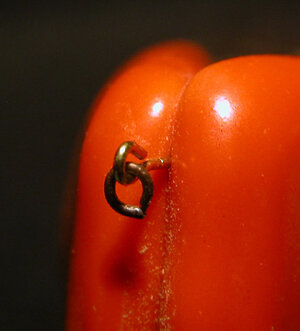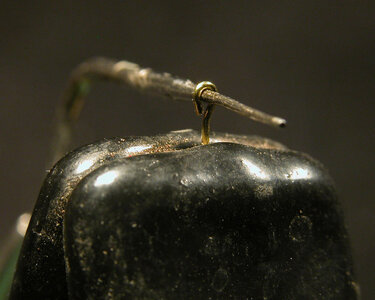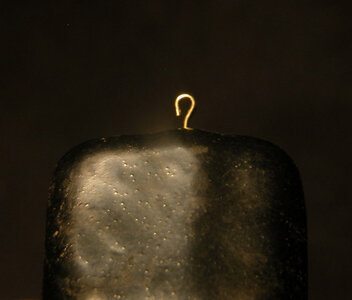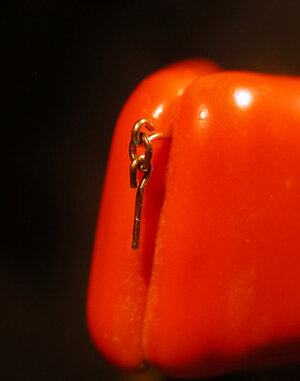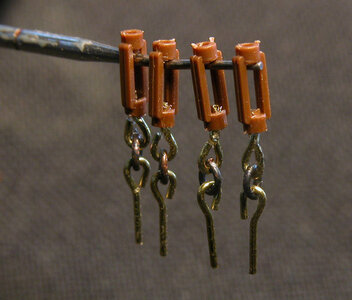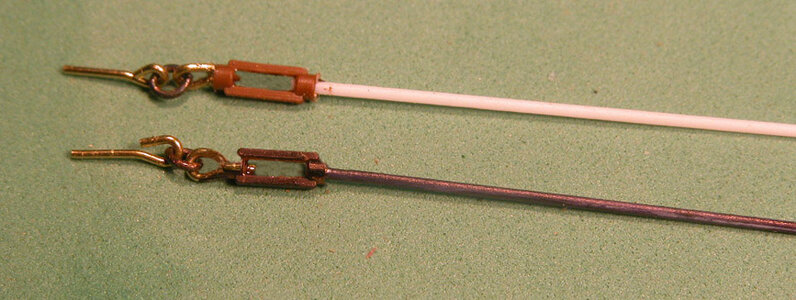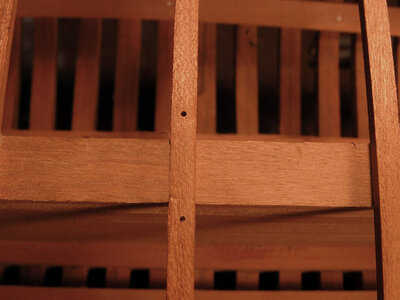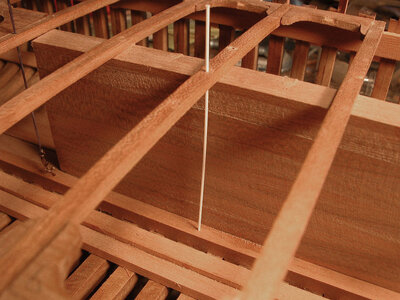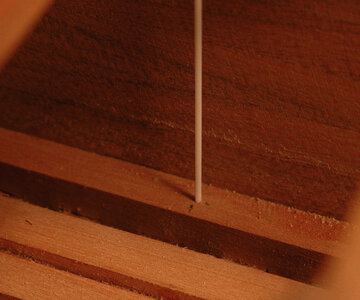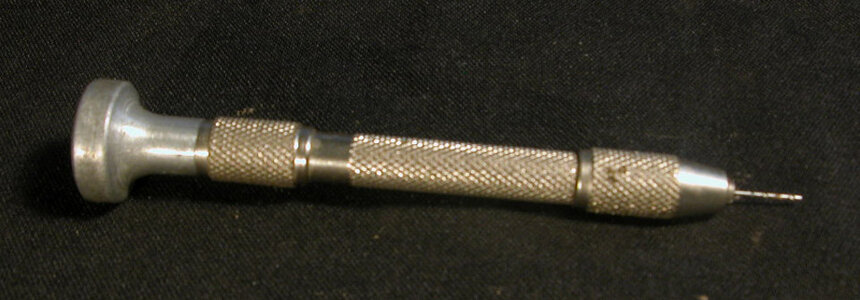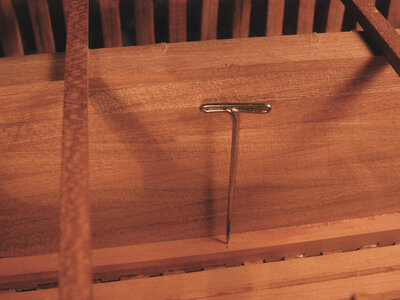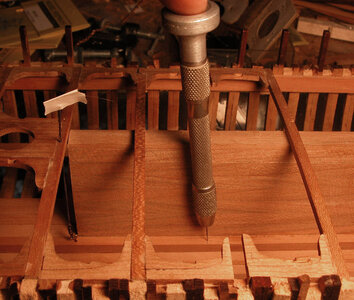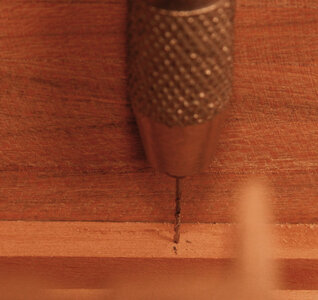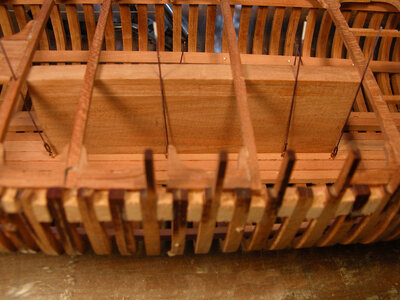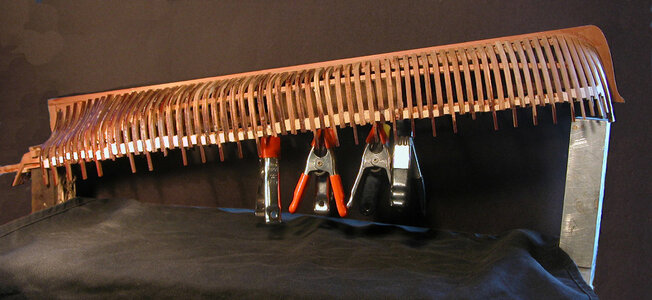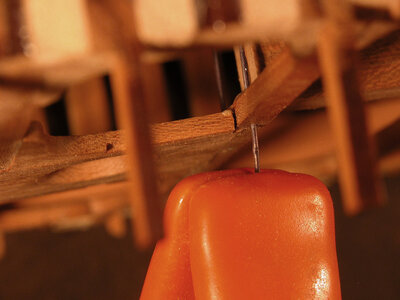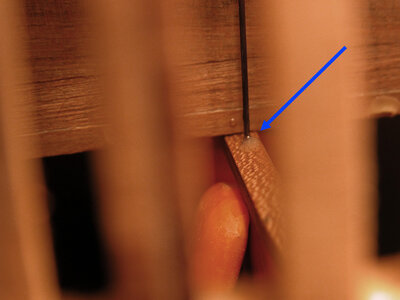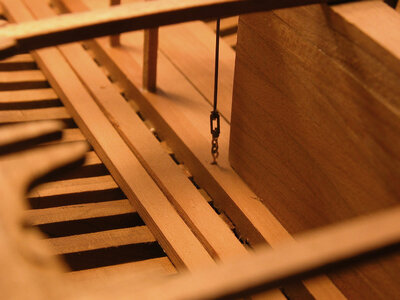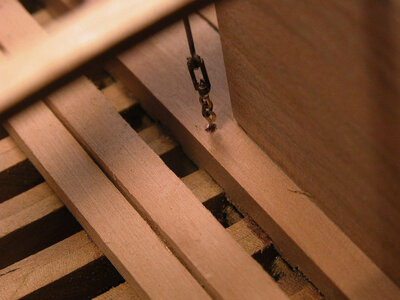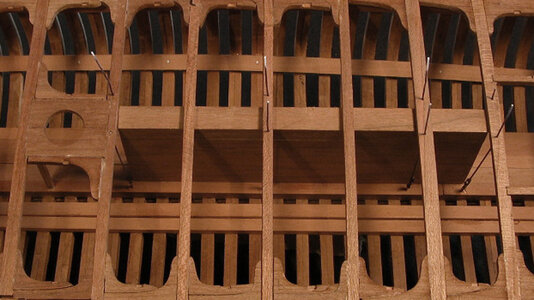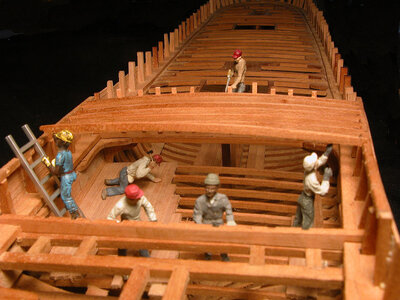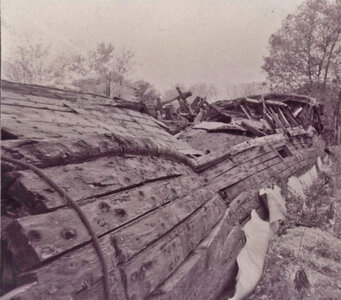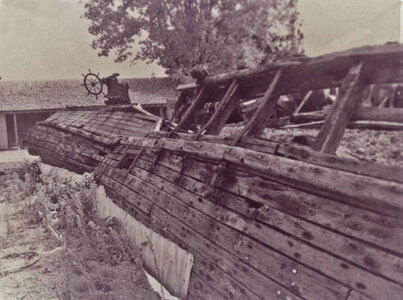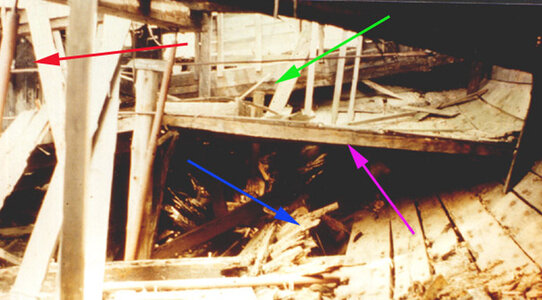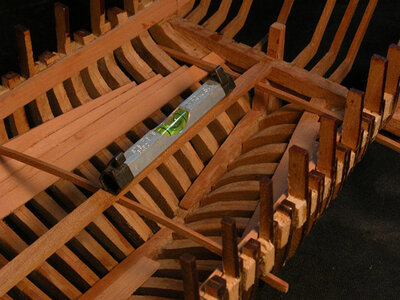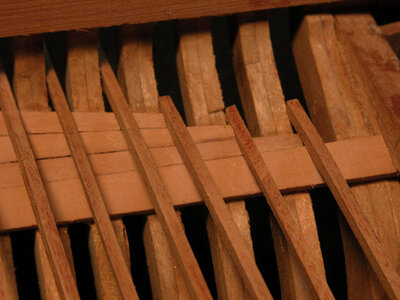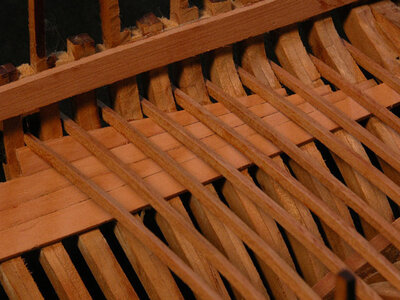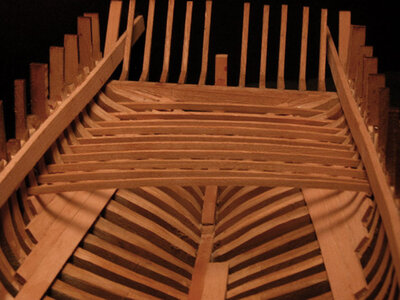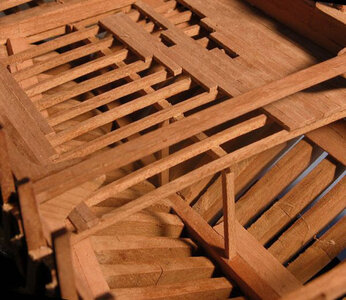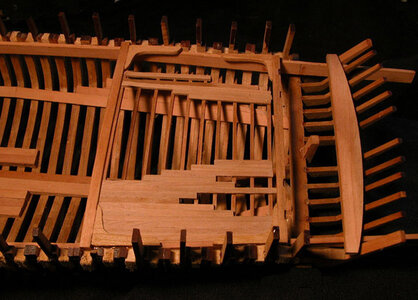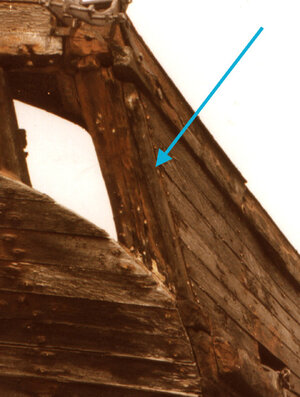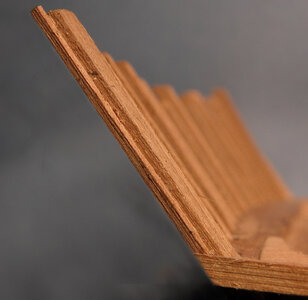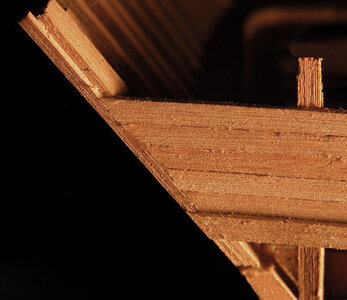- Joined
- Dec 1, 2016
- Messages
- 5,136
- Points
- 728

i preped up the first section of the waterway with a piece of electrical tape. Using electrical tape gives me a clear clean line. This line is the depth of the notches.

Using the cardboard pattern which has been fit to the hull lay it on a wood blank and mark each notch. Make two cuts along the sides of the notch. Light pressure for the first cuts are better as the knife blade will not be prone to following the grain. Go over the cuts a couple more times to deepen the cuts
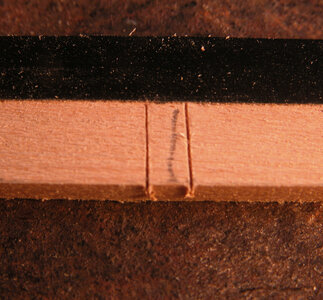
With a knife make two angle cuts from inside the notch to the outer cuts. This will create a grove no larger than the rim of a penny. When i cut the notch the saw will follow the V grove and not wonder from side to side.
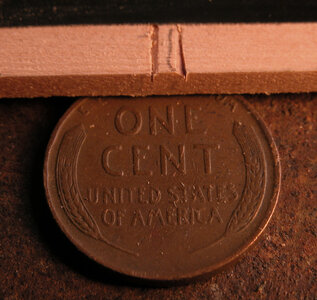
With a fine razor saw cut very lightly and at a steep angle along the V grove. By cutting at a steep angle you are deepening the cut and the saw will follow along the cut .
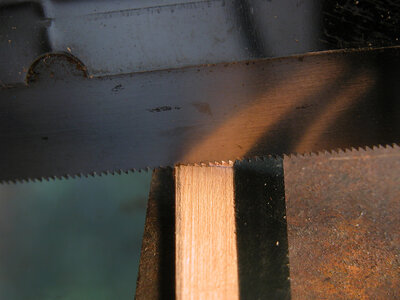
By the time you have made the first saw cut cutting at a 90 degrees has become easy at least 70% of the woods thickness is cut away and the saw will follow the original knife cut much easier. Make the final cut right to the edge of the electrical tape.
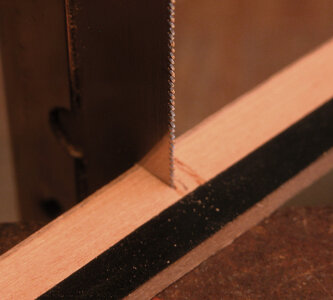
These are the two final cuts. In the photo you can see if the saw cut runs amuck in the cut on the left, it will take the path of least resistance and cut towards the center of the notch. This was the reason for the V grove cut at the beginning. The saw will naturally use the knife cut as a guild. Cutting with a razor saw has to be done very easy and slow to avoid the cut from running off its mark.
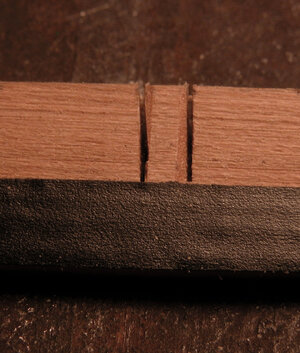

Using the cardboard pattern which has been fit to the hull lay it on a wood blank and mark each notch. Make two cuts along the sides of the notch. Light pressure for the first cuts are better as the knife blade will not be prone to following the grain. Go over the cuts a couple more times to deepen the cuts

With a knife make two angle cuts from inside the notch to the outer cuts. This will create a grove no larger than the rim of a penny. When i cut the notch the saw will follow the V grove and not wonder from side to side.

With a fine razor saw cut very lightly and at a steep angle along the V grove. By cutting at a steep angle you are deepening the cut and the saw will follow along the cut .

By the time you have made the first saw cut cutting at a 90 degrees has become easy at least 70% of the woods thickness is cut away and the saw will follow the original knife cut much easier. Make the final cut right to the edge of the electrical tape.

These are the two final cuts. In the photo you can see if the saw cut runs amuck in the cut on the left, it will take the path of least resistance and cut towards the center of the notch. This was the reason for the V grove cut at the beginning. The saw will naturally use the knife cut as a guild. Cutting with a razor saw has to be done very easy and slow to avoid the cut from running off its mark.


